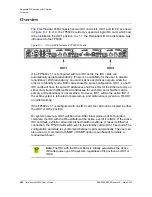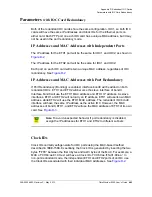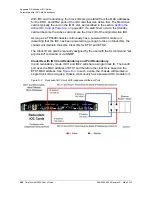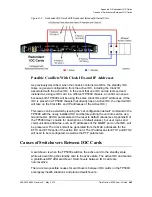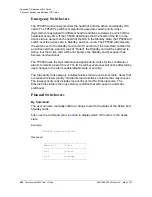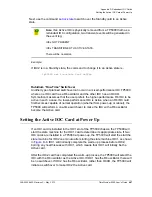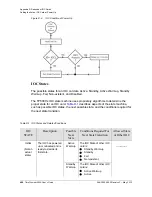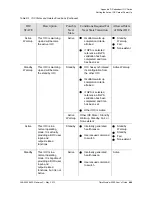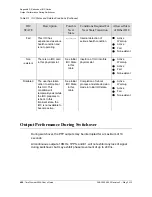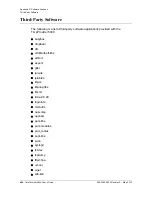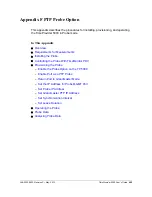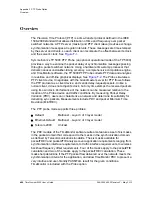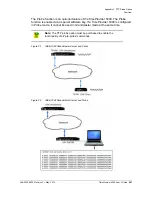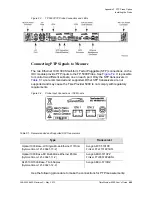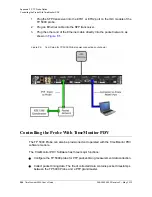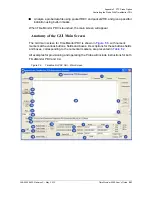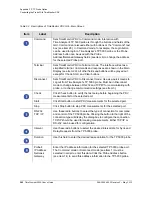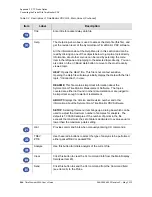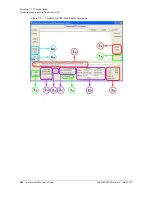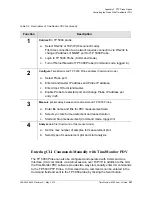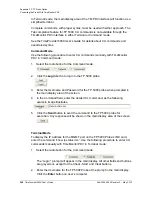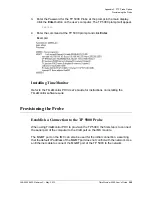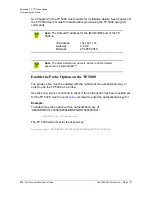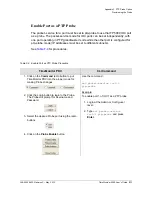
496 TimeProvider 5000 User’s Guide
098-00028-000 Revision F – May, 2012
Appendix F PTP Probe Option
Overview
Overview
The Precision Time Protocol (PTP) is a time-transfer protocol defined in the IEEE
1588-2008 standard that allows distribution of time and frequency over packet
switched networks. A PTP server (master) and PTP client (slave) devices exchange
synchronization messages at regular intervals. These messages are time-stamped
by the server and clients, so each client can recompute the offset between its clock
and the server's clock. See
Symmetricom’s TP 5000 PTP Probe (an optional operational mode of the TP 5000)
provides a way to examine the packet delay of synchronization messages passing
through a packet switched network. Using a hardware time-stamp processor that
delivers nanosecond caliber-timing accuracy, a comprehensive computation engine,
and TimeMonitor software, the TP 5000 PTP Probe collects PTP data and analyzes
in real-time and off-line graphical displays. See
. The Probe simulates a
PTP client device. It negotiates with the Grandmaster server for PTP flows, follows
the PTP protocol as a client device, and sends delay-request packets. Unlike a
normal client, it does not adjust its clock, but only time stamps the received packets
using its own clock. Performance of the network can be measured relative to the
location of the Probe device and traffic conditions. By measuring Packet Delay
Variation (PDV), users can characterize a network and determine its suitability for
delivering sync packets. Measurements include PDV and packet Minimum Time
Deviation (MinTDEV).
The PTP probe mode supports three profiles:
Default:
Multicast
Layer 3 of 7-layer model
Ethernet-Default: Multicast
Layer 2 of 7-layer model
Telecom-2008:
Unicast
The PDV module of the TimeMonitor software suite also features a set of six masks
in the packet domain that correspond to the masks in the synchronization domain,
as defined by Telecommunication standards. The six masks available for
packetTDEV and packetZTIE analysis cover application requirements ranging from
synchronization interface requirements, to traffic interface requirements, to wireless
backhaul frequency offset requirements. Four of the masks apply to the packetZTIE
calculation and two of the masks apply to the packetTDEV calculation. These
masks help determine if the PTP packet flow delivered over the network meets the
synchronization criteria for the application, and allow TimeMonitor PDV to present a
very intuitive and user-friendly PASS/FAIL result for the given conditions.
TimeMonitor is included with the Probe option.
Summary of Contents for TimeProvider 5000
Page 12: ...Table of Contents 12 TimeProvider 5000 User s Guide 098 00028 000 Revision F May 2012 ...
Page 16: ...List of Figures 16 TimeProvider 5000 User s Guide 098 00028 000 Revision F May 2012 ...
Page 20: ...List of Tables 20 TimeProvider 5000 User s Guide 098 00028 000 Revision F May 2012 ...
Page 56: ...56 TimeProvider 5000 User s Guide 098 00028 000 Revision F May 2012 Chapter 1 Overview Alarms ...
Page 534: ...Index W W 534 TimeProvider 5000 User s Guide 098 00028 000 Revision F May 2012 ...

